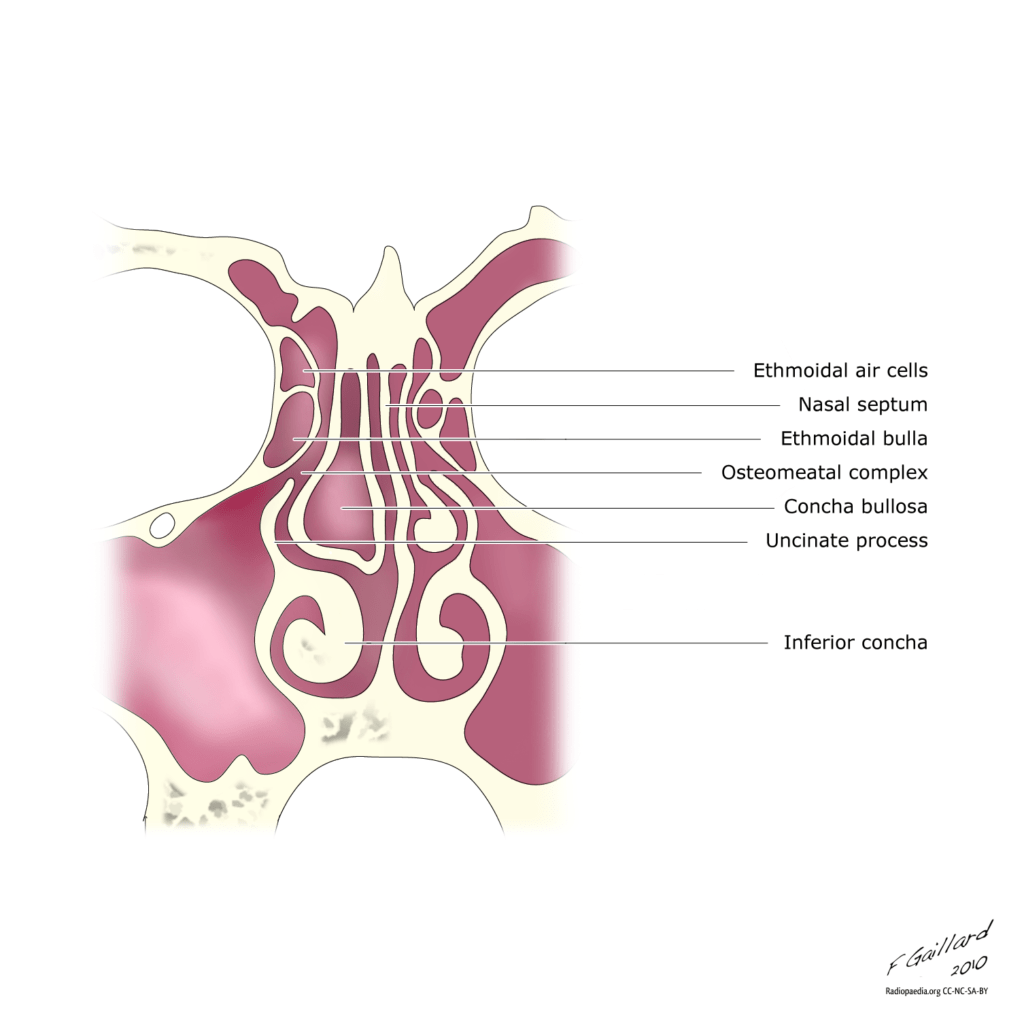
Concha bullosa is a variation in the anatomy of the nose. It means concha(i.e. nasal turbinate) that is air filled and looks like a balloon. It is a diagnosis that can only be suspected on clinical examination and confirmed by an imaging like CT-Scan or MRI scan.
When should concha bullosa be suspected?
It should be suspected if a person suffers from chronic nose congestion with headaches that do not respond to medical management.
Anatomy of concha bullosa
Middle turbinate is most common turbinate affected by concha whereas, inferior or superior turbinate may be affected but it is rare. Concha bullosa is the result of pneumatization (i.e. air-cell formation) within the bone of middle turbinate during development.
How does concha bullosa affect the physiology of the nose?
This condition gives the middle turbinate an inflated bulbous shape. Middle turbinate in normal circumstances appears like an elongated inverted comma. This bulbous variation reduces the volume in the nasal passage, the affected individual often complains of nasal congestion or a hypo nasal quality to the voice.
If the concha is large enough it can come in contact with the septal mucosa or block the osteomeatal complex. When in touch with the septal mucosa, the sensory nerves of the nose get stimulated and the patient experiences a persistent dull headache. When the osteomeatal complex gets blocked it results in blocked sinus drainage that can complicate into sinusitis.
What is the treatment of concha bullosa?
Concha bullosa is an anatomical variation, it can be modified or corrected surgically. Medical management is successful in treating only associated conditions like sinusitis or rhinitis.
How is the surgery done?
Surgery for concha is done endoscopically, i.e. through the nostrils with the help of an endoscope. Since the nostrils provide a natural opening into the nose, there is no need for an incision and it’s a naturally scar free surgery.
How long is the recovery period after surgery?
Post surgery the patient is kept under observation for a day and then discharged with instructions to rest at home. After a couple of days, patients can resume light work. A couple of follow-ups with the operating surgeon are required over the coming weeks to ensure proper healing.


